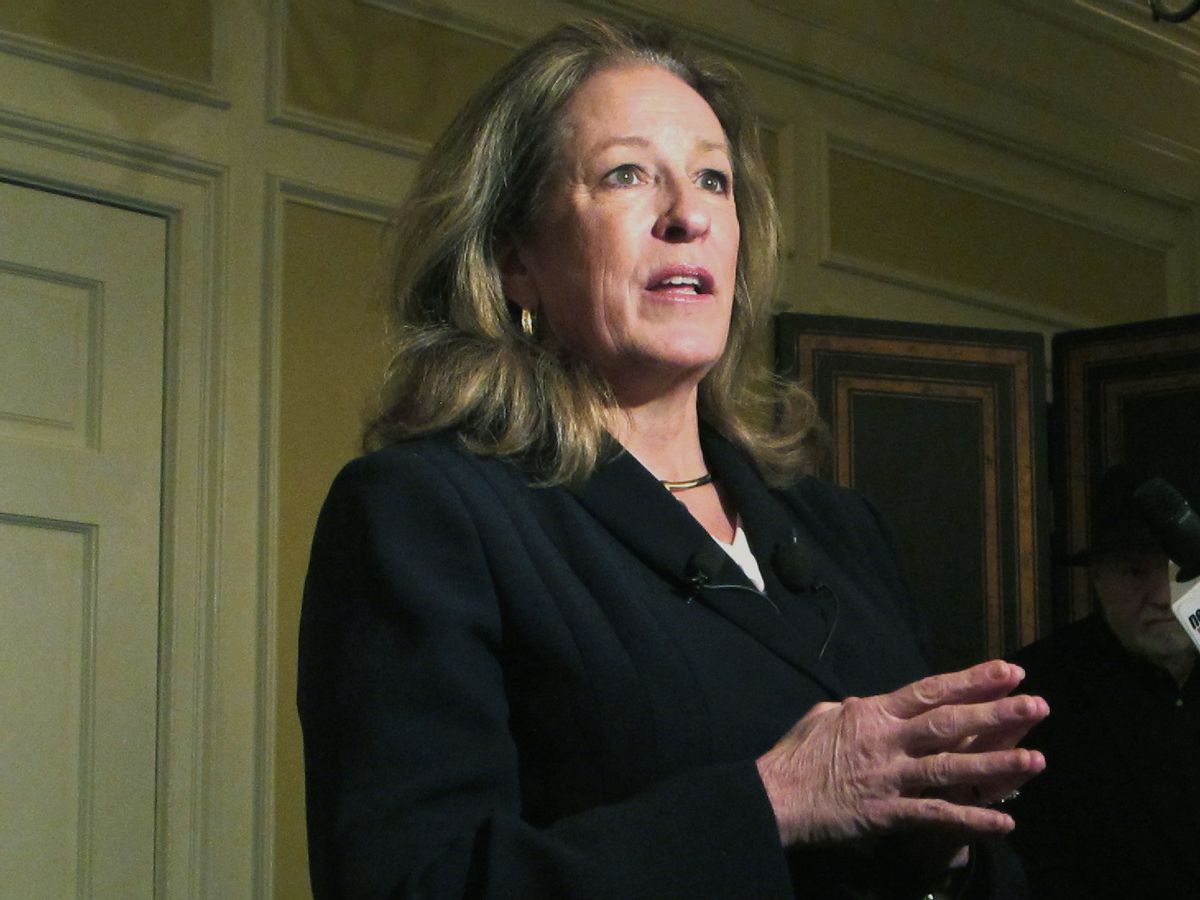There was a certain futility to Elizabeth Colbert Busch’s congressional campaign, one that had nothing to do with her and everything to do with the state and region she calls home.
When a poll a few weeks ago put her ahead of former Gov. Mark Sanford by 9 points in South Carolina’s 1st District special election, Democrats perked up at the prospect of an unlikely victory in the heart of Dixie. But there was reason to be skeptical of that poll, and when the votes were tallied Tuesday night reality asserted itself quickly, with Sanford posting a relatively easy 54-45 percent win.
In hindsight, no one should be surprised. There’s plenty of chatter this morning about supposed turning points in the race, dramatic moments when Sanford snatched the momentum from his Democratic opponent and won over reluctant swing voters. But who knows if Sanford was ever really trailing by that much in the first place. More likely, the SC-1 special election is simply the latest example of white voters in the South – and particularly the Deep South – doing what they almost always do these days: vote Republican.
This is the story of modern Southern politics. From the end of Reconstruction through the civil rights revolution, the South was an almost uniformly Democratic region. In 1936, for example, Franklin Roosevelt won more than 98 percent of the vote in South Carolina. Race wasn’t the only reason for the South’s shift toward the GOP, but it was the biggest single driver. In 1948, northern liberals inserted a civil rights plank into the national Democratic platform, prompting a walkout of Southern delegations – which then coalesced around the third party Dixiecrat candidacy of Strom Thurmond. An uneasy truce between national and Southern Democrats was reached after that election, but it was untenable. When LBJ signed the Civil Rights Act of 1964, the modern Southern GOP was born. Nationally, LBJ crushed Barry Goldwater in the fall of ’64, racking up more than 60 percent of the popular vote. But Goldwater carried five Southern states – winning 59 percent in South Carolina, 69 percent in Alabama and 87 percent in Mississippi.
It took a long time for the basic pattern established in ’64 to be reflected up and down the ballot, but today white Southerners are almost as loyal to the Republican Party as they once were to the Democrats. GOP presidential candidates customarily win more than 70 percent of the white vote in the South, success that in the past two decades has at last trickled down to the local and state legislative levels. This is particularly true in the Deep South, which encompasses South Carolina, Georgia, Alabama, Mississippi and Louisiana. Exit polling was intermittent last November, but in Mississippi Mitt Romney gobbled up 89 percent of the white vote; with Barack Obama winning 96 percent of the black vote, this translated into a 55-44 percent Romney win in the state.
In this environment, Democratic success in the Deep South is mostly limited to district-level races in majority black areas. A number of African-American Democrats represent the region in the U.S. House, with districts created and protected by the Voting Rights Act. But where white voters constitute majorities, affiliation with the Democratic Party is often the kiss of death for a candidate.
More than anything else, this explains Colbert Busch’s defeat. South Carolina’s 1st District is 75 percent white. It voted for Romney by 18 points last year. Its modern history is a microcosm of South Carolina’s and the South’s. For decades, the district was represented in the House by L. Mendel Rivers, a Democrat who joined the ’48 convention walkout and backed Thurmond’s Dixiecrat candidacy, who warned that civil rights legislation in the ‘60s would produce “bloodshed,” and flirted with George Wallace in 1968. By the time Rivers died in office in 1970, the GOP was gaining momentum in the region; in the special election to replace him, a conservative Democrat – Mendel Davis – barely beat the Republican candidate, James Edwards. In 1980, the GOP finally broke through, with Thomas Hartnett winning the seat, and since then only Republicans have held it.
If Colbert Busch had won, it would have made her one of only two white Democratic House members from the Deep South. (The other, John Barrow, has somehow defied political gravity for nearly a decade in Georgia.) And had she won, she would have immediately become one of the GOP’s top targets for 2014. That the race was at all competitive was entirely a reflection of Sanford’s personal transgressions. Republican Tim Scott, who left the seat earlier this year after being appointed to the Senate, carried the district with 68 percent in 2010 and 62 percent last year. With just 54 percent of the vote, Sanford clearly paid a price for his scandal. But he still won by almost 10 points, which just goes to show that in the Deep South these days, there really isn’t much that Democrats can do.

Shares